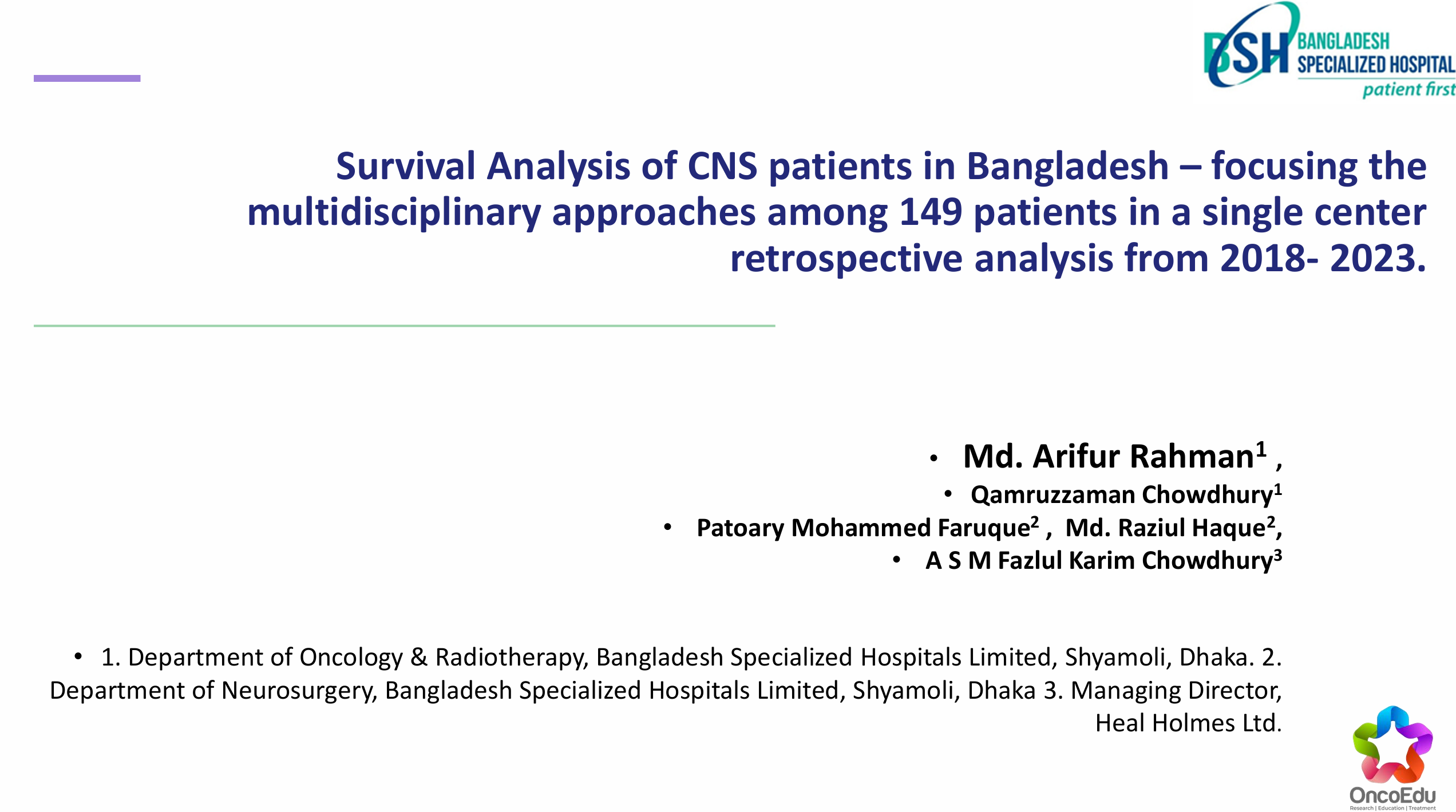Survival Analysis of CNS patients in Bangladesh – focusing the multidisciplinary approaches among 149 patients in a single centre retrospective analysis from 2018- 2023.
Authors: Md. Arifur Rahman1, Qamruzzaman Chowdhury1, Patoary Mohammed Faruque2, Md. Raziul Haque2, A S M Fazlul Karim Chowdhury3
Institution: Bangladesh Specialized Hospital PLC
Introduction
Central Nervous Tumor (CNS) tumor is variable survival status due to its location and age groups. We tried to find selected CNS tumors among adult and child with tri-modalities treatment and compared the survival and prognostic factors among 149 patients first time in Bangladesh.
Methods
Retrospective analysis was done through hospital information system among CNS tumors patient’s prescription from 2018 to 2023. Follow up was also confirmed through tele conversation where the last follow up was not recent. A model with python created to analyze the survival in different groups with log rank test and COX proportional hazard ratio also tested.
Results
Among the 149 cases the median age 46.89 years with histology grouped in 4 major divisions of Ependymoma, Oligodendroglioma, Astrocytoma & Glioblastoma (GBM) with the frequencies of 11(7.4%), 12(8.1%), 48(32.2%) & 78(52.3%). Male female ration is about 65.1:34.9. Position of tumor predominantly in right side of brain 53.7%. 70.5% of them achieved GTR due to the use of Neuronavigation and 4% patients have only biopsy due to inoperability. Age group is proposed with 1-18 children (10%), 18-60 young adult (71%) & Above 60 Sn. Adult (19%). Highest location of tumor was found to have in temporal, frontal & parietal region about 62% together. The median overall survival was found 19.2m (95% CI, 14.3-26.7) and the male:female gender ratio is 17.9m:24.4m. The individual histological median survival was lowest in GBM 11.7m & in Astrocytoma- 21.9m. If we compare with the histology with grading the results of median survival also similar like in G-IV 11.7m (95% CI-8.93-17.47) where as in case of G-III 24.4m (95% CI 18.1-66.67) & in G-II 54.97m (95% CI- 21.9-74.03). Surgery type also plays an important role in our study, STR & GTR 18.07m vs 19.73m, however the NTR group showed the lowest survival 5.4m as expected in biopsy only group too. 23.5% of IDH mutation positive patients has better survival than 18.1% negative patients (21.9m vs 16.63m). COX proportional hazard ratio in Forest Plot also in favor of in case of IDH & Surgery type & Histology as well.
Conclusion
The analysis is little complicated in case of heterogeneous histology and location of CNS tumors. But with the model that created by python showed significant relationship and survival outcome. If the sample size also increases in number and the single histology selected to find out the comparison with other parameters, then the best survival outcome can be estimated.
